
THE NAME PIYAMARADU has faded from history, but for some 40 years in the thirteenth century B.C., he was the nemesis of three successive rulers of the Hittite Empire, a Bronze Age kingdom that once spread across much of Anatolia, or present-day Turkey. At least a dozen cuneiform tablets unearthed in the royal archive of the Hittite capital of Hattusa speak darkly of this renegade. A powerful warlord, he was a disaffected Anatolian noble who had pledged fealty to the king before turning to banditry.
According to Hittite records, he pillaged the empire's westernmost possessions with impunity, carrying out devastating raids and then retreating to the shores of the Aegean, where he remained out of the Hittite rulers' reach. At some point, King Hattusili III (reigned ca. 1267-1237 B.C.) had had enough of Piyamaradu's predatory forays and lodged a firm diplomatic request with a fellow ruler to bring the meddlesome figure to heel. He addressed this missive to the king of Ahhiyawa, a great land to the west of Anatolia. In a surviving draft of the letter, he insists that his fellow ruler capture Piyamaradu or otherwise put an end to his attacks. Hattusili III further notes that earlier requests that the king of Ahhiyawa stop Piyamaradu had gone unheeded. What was not evident to Hattusili III-but is to modern scholars-is that the king of Ahhiyawa was likely powerless to stop Piyamaradu. "The Hittite kings fundamentally misunderstood what Ahhiyawa was," says Indiana University archaeologist Nicholas Blackwell.
Twenty-eight known Hittite tablets invoke the name Ahhiyawa, which scholars are now all but certain is related to "Achaean," a term Homer uses in the epic poem the Iliad to refer to all Greeks. Most now believe that the word was used by Hittites to describe the Mycenaean city-states of Late Bronze Age Greece, which flourished from around 1600 to 1200 B.C.
This story is from the September/October 2023 edition of Archaeology.
Start your 7-day Magzter GOLD free trial to access thousands of curated premium stories, and 9,000+ magazines and newspapers.
Already a subscriber ? Sign In
This story is from the September/October 2023 edition of Archaeology.
Start your 7-day Magzter GOLD free trial to access thousands of curated premium stories, and 9,000+ magazines and newspapers.
Already a subscriber? Sign In
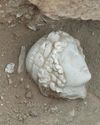
Digs & Discoveries - A Friend For Hercules - Archaeologists discovered a finely carved head depicting Apollo, god of the sun, music, and poetry.
While digging at the crossroads of the two main streets in the ancient city of Philippi in northern Greece, archaeologists discovered a finely carved head depicting Apollo, god of the sun, music, and poetry.
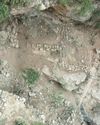
Digs & Discoveries - A Fortress Sanctuary - A sprawling 2,000-year-old fortress in the Zagros Mountains of Iraqi Kurdistan appears to have included a sanctuary dedicated to the ancient Persian water goddess Anahita.
A sprawling 2,000-year-old fortress in the Zagros Mountains of Iraqi Kurdistan appears to have included a sanctuary dedicated to the ancient Persian water goddess Anahita.
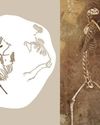
Like Cats And Dogs – Archeologist fund the skeleton of a male Eurasian lynx (Lynx lynx), a notoriously shy creature.
Оn the periphery of Zamárdi, an ancient lakeshore settlement in west-central Hungary, archaeologists uncovered a nearly five-foot-deep beehive-shaped pit with the skeletons of four adult dogs buried in successive shallow layers.
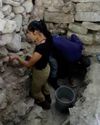
A Dynasty Born In Fire- How an upstart Maya king forged a new social order amid chaos
At the beginning of the Terminal Classic period (ca. A.D. 810-1000), many of the great kingdoms of the southern Maya lowlands-among them Tikal, Palenque, and Calakmul-were being abandoned or collapsing. For many years, scholars have assumed that most, if not all, the other kingdoms across the Maya world must have also been in steep decline.
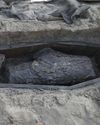
Medical Malfeasance - Archaeologists uncovered two coffins during excavations of a nineteenth-century cemetery in Quebec City that provide evidence of the illicit practice of diverting corpses for the study of human anatomy.
Archaeologists uncovered two coffins during excavations of a nineteenth-century cemetery in Quebec City that provide evidence of the illicit practice of diverting corpses for the study of human anatomy. Starting in 1847, medical students were required to have practical experience studying human anatomy, but legal options to procure cadavers were limited
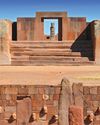
RISE AND FALL OF TIWANAKU
New dating techniques are unraveling the mystery of a sacred Andean city
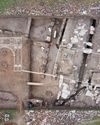
Making a Roman Emperor
A newly discovered monumental arch in Serbia reveals a family's rise to power in the late second century A.D.
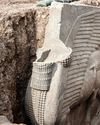
The Assyrian Renaissance
Archaeologists return to Nineveh in northern Iraq, one of the ancient world's grandest imperial capitals

Java's Megalithic Mountain
Across the Indonesian archipelago, people raised immense stones to honor their ancestors
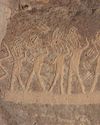
THE SONG IN THE STONE
Located in a desert gorge in southern Peru, Toro Muerto is one of the richest rock art sites in South America. It includes at least 2,600 boulders bearing petroglyphs, many featuring figures known as danzantes who appear to be dancing.